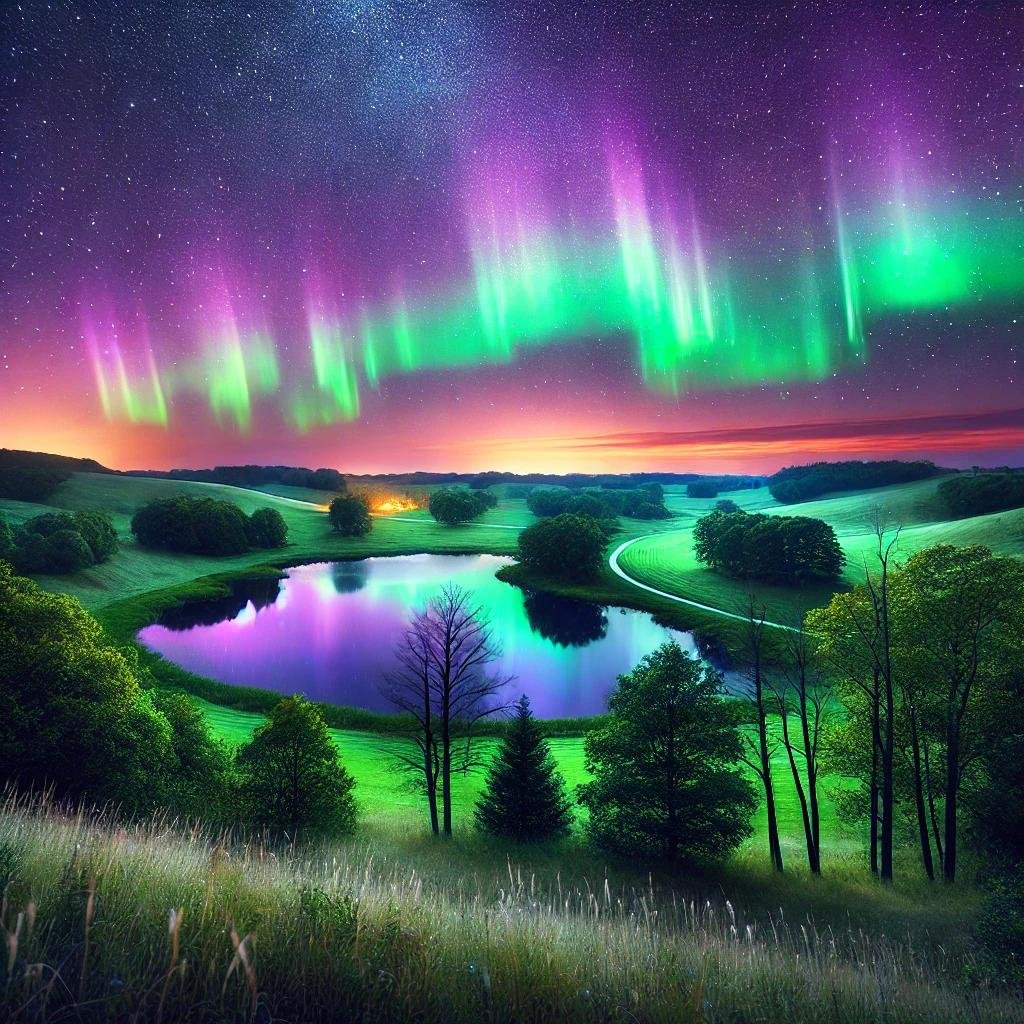Background
Among the most amazing displays found in nature are the Northern Lights, sometimes called Aurora Borealis. Although usually connected with frigid areas like Alaska and Scandinavia, Illinois under the correct circumstances shows this amazing light display. This guide covers advice to improve your experience, the best places to see the Northern Lights in Illinois, and when and how to observe them.
The Northern Lights: Their Origin
Charged solar particles interacting with Earth’s atmosphere produce vivid displays of green, purple, and red lights in the sky known as the Northern Lights. Although they occasionally reach lower latitudes, including portions of the Midwest, during high solar activity, these geomagnetic storms are most common close to the Arctic and Antarctic circles.
Can Illinois see the Northern Lights?
Definitely yes. Rare as they are, the Northern Lights have been seen in Illinois at times of higher solar activity. The best opportunities to see the aurora show themselves when:
- Strong geomagnetic storms (NOAA space weather scale: G3 or above).
- There is clear sky devoid of light pollution.
- You live in a rural or northern section of the state.
- Usually occurring during peak sunspot cycles, solar activity is strong.
Top Locations in Illinois for Seeing the Northern Lights
While urban light pollution makes aurora viewing difficult in places like Chicago, rural areas provide better possibilities. These are some of the finest places to raise your odds:
1. Apple River Canyon State Park in Northwest Illinois
- One of the best places in Illinois for stargazing and aurora viewing is minimal light pollution.
- Near the Wisconsin border, which usually gets better view during geomagnetic storms.
2. Savanna, IL’s Mississippi Palisades State Park
- Provides wide horizons free from much artificial light disturbance.
- Best visited on a clear, moonless night for best aurora views.
3. Middle Fork River Forest Preserve in Central Illinois
- Formally identified as the first International Dark Sky Park in Illinois.
- Perfect for astrophotography and obtaining brief views of celestial occurrences like the Northern Lights.
4. Chain O’Lakes State Park, Northeast Illinois
- Not far from the Wisconsin border, where aurora activity is typically more pronounced.
- Presents open scenes free of much hindrance.
5. Garden of the Gods, Shawnee National Forest, Southern Illinois
- The park’s high altitudes and unobstructed sky can occasionally let aurora sightings during powerful geomagnetic storms occur even further south.
When might one see the Northern Lights in Illinois?
Although the Northern Lights have no set timetable, Illinois offers the finest opportunities for seeing them:
- The sun runs on an 11-year cycle during which time the next peak is projected to occur between 2024 and 2025.
- Auroral action is most strong at night between 10 PM and 2 AM.
- On clear, gloomy evenings, light pollution and clouds’ absence is absolutely vital.
- The NOAA Space Weather Prediction Center lets you track real-time aurora forecasts during severe geomagnetic storms.
How Can Your Probabilities of Seeing the Northern Lights Be Enhanced?
- Websites such as NOAA’s Aurora Forecasts offer real-time geomagnetic activity data.
- To get the finest view, visit dark-sky locations or state parks avoiding light pollution.
- Use a camera to picture auroras; sometimes they seem faint to the unaided eye but can be captured with long-exposure.
- Look North: Illinois’ aurora typically appears close to the northern horizon.
- Track space weather updates on social media or aurora tracking applications to remain current on solar activity.
FAQs on Northern Lights in Illinois
READ ABOUT-The Ultimate Guide to LED Ceiling Lights: Benefits, Types, and Buying Tips
1. In Illinois, how frequently might one view the Northern Lights?
Though rare in Illinois, the Northern Lights can be seen a few times a year during powerful geomagnetic storms. The best possibilities arise during solar maximum.
2. When should I hunt the Northern Lights?
Auroras are generally seen between 10 PM and 2 AM; their intensity usually peaks about midnight.
3. Could Chicago see the Northern Lights?
The great difficulty stems from strong light pollution. Your best bet is to head for state parks or rural places far from city lights.
4. Which tools enable one to monitor Northern Lights activity?
Popular aurora tracking tools are the NOAA Space Weather app, Aurora Alerts, and My Aurora Forecast.
5. In Illinois, do the Northern Lights show varying colors?
Indeed! Though green is the most often occurring color, powerful geomagnetic storms can create red, purple, and blue tones.
Final Thought
While viewing the Northern Lights in Illinois calls for some luck and preparation, it is feasible during times of high solar activity. Your chances of seeing this celestial event will rise if you pick the correct spot, track space weather forecasts, and lower light pollution. Whether your only goal is to see this natural beauty or you enjoy stargazing, monitoring solar activity could pay off with an amazing encounter.

